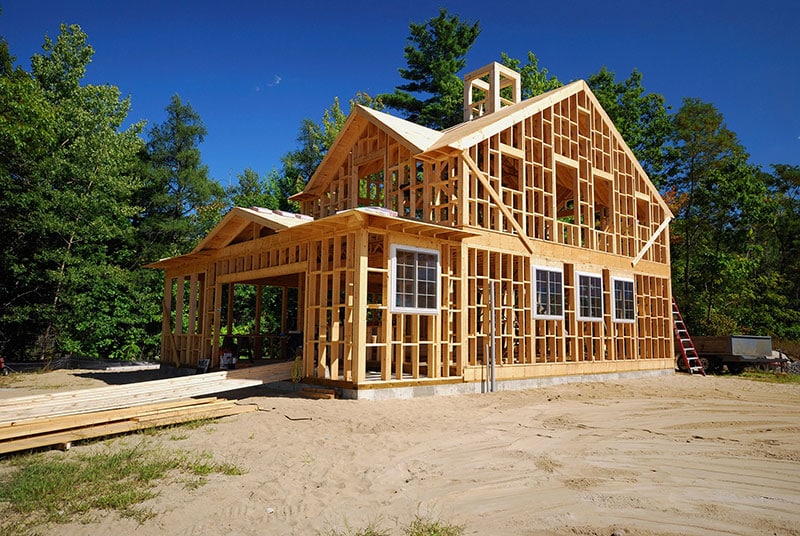Ontario is in the grips of a severe housing supply and affordability crisis that requires urgent action. Demand for homes far outpaces what is being built, leading to skyrocketing home prices and rents that are pricing many residents out of the market. This not only impacts homebuyers but also poses a major threat to economic prosperity if workers and families are forced to leave major cities due to unaffordability.
While all levels of government now acknowledge the scale of the problem, bold steps must be taken to boost housing supply rapidly. The construction industry believes it has the capacity to build substantially more new homes to meet targets, but systemic barriers are preventing them from doing so. Excessive regulations, delays in approvals, and uncompetitive tax burdens are some of the major hurdles.
According to estimates, Ontario likely needs between 1.5 to 1.85 million new homes built over the next decade to address the shortfall. However, only 96,000 homes were constructed in 2022, far below what is required. To put this in perspective, the annual pace of housing construction needs to essentially double from the historical average of 75,000 per year if supply is to catch up with demand.
With strong political will, a clear strategy, and willingness to make tough reforms, it is possible to resolve Ontario’s housing crisis. But time is running out. The situation will only worsen if urgent action is not taken now to enable the construction industry to build the hundreds of thousands of homes the province desperately needs.
Removing Barriers to Home Building
A major barrier standing in the way of substantially increasing housing construction is the extensive regulations and red tape surrounding development approvals. By some estimates, there are up to 45 different government bodies and agencies involved in approving new housing projects in Ontario. From municipal planning departments to conservation authorities and school boards, layers of bureaucracy slow down approvals to a crawl. It takes years for shovel-ready projects to get the green light, if they even do. Compared to global leaders like Singapore, which relies on only 12 bodies for approvals, Ontario’s process is outdated and inefficient. To meet bold housing targets, the whole approvals procedure needs an overhaul to remove duplication, inconsistencies, and outdated planning policies. The industry has the capacity to build, but first government must help by modernizing the system and clearing the path.

Speeding up the Approvals Process
To significantly increase the pace of housing construction, the development approvals process desperately needs modernization. With up to 45 government entities involved in approvals, getting projects off the ground takes far too long.
Ontario should follow the lead of jurisdictions like Singapore that rely on just 12 bodies to grant approvals, using online systems and clear guidelines to speed up decisions. Digitizing and consolidating the approvals process would help eliminate duplication and inconsistencies. Provincial and municipal governments also need to review outdated planning policies and zoning rules that restrict housing density and supply.
Establishing firm timelines and service standards for approvals along with “deeming provisions” if delays occur, would help quicken the pace. With today’s technology, there is no reason the approvals process can’t be far more efficient. But it will take political courage from leaders to push through the necessary reforms.
The Risks of Inaction
If significant action is not taken soon to remedy the housing supply shortage, Ontario risks losing talent and economic competitiveness. With home prices and rents Spiraling out of control, young professionals and working families are already leaving major urban Centers for more affordable cities out west and east. Ontario could face a dangerous brain drain if Unaffordability persists.
Businesses will also struggle to attract labor if workers cannot secure housing they can reasonably afford near job centers. Furthermore, the lack of supply is preventing natural population growth from immigration, costing the economy in missed opportunities.
While all levels of government now recognize these risks, acknowledgment must be paired with swift, bold reforms before the situation deteriorates further. The consequences of failing to act decisively on removing barriers to construction and boosting housing supply will be far-reaching. The time for urgent action is now.
Conclusion
Ontario finds itself at a critical juncture when it comes to resolving its housing crisis. The construction industry has signaled it can deliver the hundreds of thousands of new homes required over the next decade through embracing innovation and new building techniques.
But government must also play its part by clearing away systemic barriers like excessive regulations, tax burdens, and broken approvals processes currently restricting supply and driving up costs. With strong leadership and a willingness for systemic reform, it is possible to ensure Ontario remains a place where workers, families, and businesses can thrive.
But action must be taken now before the window of opportunity closes. By working collaboratively, government and industry can ensure the province builds the homes it needs to support economic growth and prosperity for all its residents.
The solutions are within reach – what is needed is urgent implementation driven by political courage.
